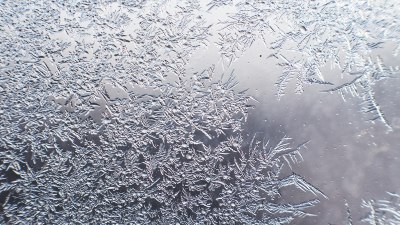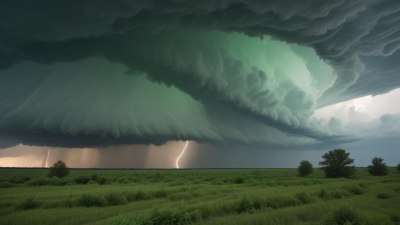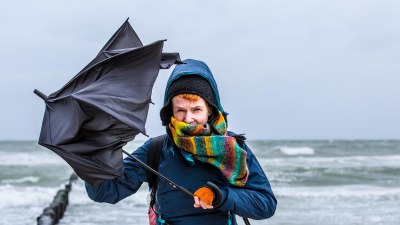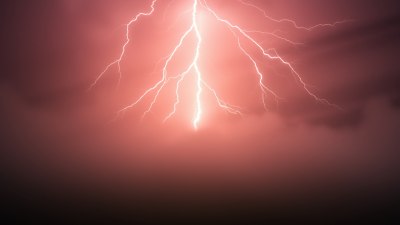Why Frost Can Form on a Warm Night The Trick of Radiative Cooling
Explore how radiative cooling can lead to frost formation even on warm nights.

Image by stopaminsk on Freepik
Frost is a common phenomenon that occurs under certain meteorological conditions. While most individuals associate frost with cold nights and winter weather, it can also form on nights that are relatively warm. This counterintuitive occurrence can be explained through the concept of radiative cooling, which allows temperatures to drop unexpectedly and lead to frost formation. In this article, we will delve into the science behind radiative cooling and how it contributes to frost formation on warm nights.
Understanding Radiative Cooling
Radiative cooling is the process by which an object loses heat by emitting infrared radiation. The Earth and all objects on its surface continuously release thermal energy as infrared radiation into the atmosphere and space. During the day, solar radiation heats the Earth's surface, but at night, especially in clear skies, this heat must escape. Under clear, calm conditions, the heat emitted from the ground cannot be easily replaced. As a result, the ground cools down rapidly, leading to lower surface temperatures.
The Role of Sky Conditions
The presence or absence of clouds significantly affects the rate of radiative cooling. On a clear night, there are no clouds to trap heat near the surface. If a night is warm—due to factors like a preceding sunny day or warmer air masses—radiative cooling can still occur efficiently. The heat escapes into the atmosphere, allowing the ground temperature to drop. In contrast, during cloudy nights, clouds act as a blanket, reflecting infrared radiation back to the surface, which keeps the ground warmer.
Ground Temperature and Frost Formation
For frost to form, ground temperatures must drop below the freezing point of water (0°C or 32°F). Even if the air temperature is mild, localized cooling at the surface can lead to frost. This phenomenon often happens in low-lying areas or near bodies of water, where cold air can settle. When the ground cools sufficiently through radiative cooling, it can chill the air immediately above it to below freezing, causing moisture in the air to condense and freeze, resulting in frost.
Humidity and Dew Point
Humidity plays an essential role in the formation of frost as well. When warm air holds moisture and then comes into contact with a colder surface, the air temperature can drop to the dew point. Once the dew point is reached, the moisture condenses into water droplets on the surface. If conditions are right and the surface temperature is low enough, these droplets can freeze into frost. Even on a night that begins warm and humid, if the ground loses heat rapidly enough, frost can develop.
Temperature Inversions
Temperature inversions can further facilitate frost formation on otherwise warm nights. An inversion occurs when warmer air traps cooler air near the ground. This situation is often seen on calm nights and can exacerbate radiative cooling effects. As the ground cools and the air at the surface becomes denser, the warm air above prevents heat from mixing back down to the surface. Consequently, the temperature at the surface can drop well below the freezing point, triggering frost formation despite the overall warm conditions.
The Factors of Geography
The geography of an area also influences frost formation. Areas with flat surfaces or valleys are more susceptible to frost because cold air, which is denser than warm air, settles into these low spots. Additionally, geographical features like lakes or rivers can affect the local microclimate. In regions where warm nights are common, localized cooling from the moisture in these water bodies can lead to the ideal conditions for frost. These geographical factors interact with radiative cooling to create complex weather patterns that can lead to frost even on warm nights.
Implications for Agriculture
For farmers and gardeners, understanding the dynamics of frost formation is crucial, even during seemingly warm nights. Frost can have devastating impacts on crops, especially tender plants that cannot withstand freezing temperatures. This knowledge aids in the precautions they take, such as planting frost-resistant crops, employing protective measures like row covers, or using tools to create slight heat around plants during predicted frost events. Understanding how and when frost can form helps mitigate the risk to crops.
Common Misconceptions
There are several misconceptions relating to frost that are important to clarify. One common belief is that frost can only form at freezing air temperatures. However, as discussed, this is untrue; ground temperatures can drop lower than air temperatures, leading to frost formation, which further illustrates the importance of understanding radiative cooling. Another misconception is that cloudy nights can lead to frost. In general, cloudy conditions protect against frost by trapping heat; nevertheless, there are specific scenarios, such as temperature inversions, where frost can still occur.
In conclusion, frost can indeed form on warm nights due to the complex interplay of radiative cooling and atmospheric conditions. By understanding this process, we can better grasp the underlying causes of frost formation, even when ambient temperatures suggest otherwise. The phenomena of radiative cooling, humidity, temperature inversions, and geographical influences all contribute to this fascinating occurrence, serving as a reminder of nature's intricate dynamics. As we grow more aware of these factors, we can take appropriate steps to protect our plants and crops and appreciate the science behind this seemingly paradoxical weather phenomenon.











